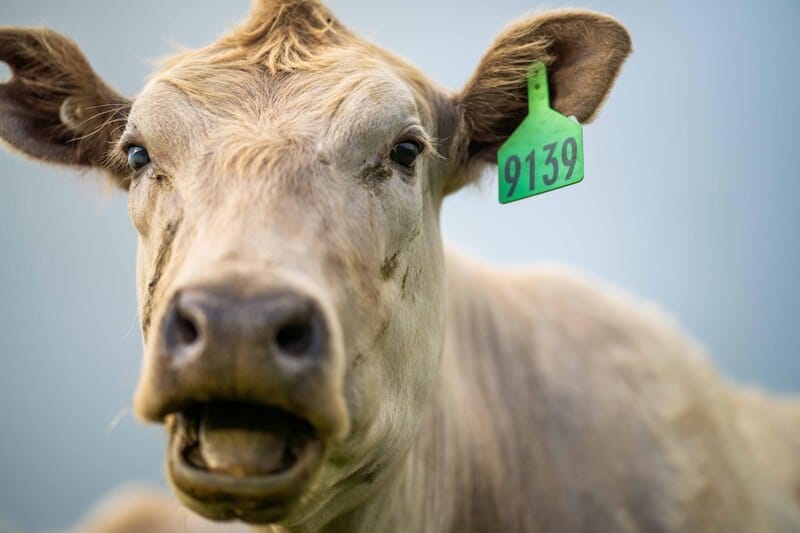According to the findings of a recent study, food-borne zoonotic E. coli is associated with about half a million cases of urinary tract infections each year.
According to the findings of recent research, E. coli that is present in meat may be to blame for tens of thousands of cases of urinary tract infections (UTIs) that occur annually in the United States. The research was conducted on a strain of bacteria known as FZECs and was published in the peer-reviewed scientific journal One Health (food-borne zoonotic E.coli).
The group of researchers from the Milken Institute School of Public Health at George Washington University (GWU), lead by professors Lance Price and Cindy Liu, came up with a novel genetic approach to trace the roots of E. coli infections. The team utilized this strategy to estimate that between 480,000 and 640,000 cases of urinary tract infections (UTIs) occur annually in the United States as a result of foodborne E. coli strains.
Both humans and animals, including those grown for their meat in the United States, are able to harbor the E. coli bacteria and be infected by it. When animals are butchered for food, the bacteria that live in their guts, including E. coli, can contaminate the meat products, putting people at risk for exposure to potentially harmful bacteria.

According to information provided by the Food and Drug Administration (FDA) of the United States, the vast majority of raw beef products contain E. coli. This new research reveals that other strains of E. coli may also pose major health hazards; yet, at the present time in the United States, only certain strains of E. coli that cause diarrhea are monitored with any severity at all.
“We’re used to the idea that foodborne E. coli can cause outbreaks of diarrhea, but the concept of foodborne E. coli causing urinary tract infections seems strange,” said Price, a professor of environmental and occupational health and the founder and co-director of the GWU Antibiotic Resistance Action Center, in a statement. “That is, until you recognize that raw meat is often riddled with the E. coli strains that cause these infections.”
“Our study provides compelling evidence that harmful E. coli strains are making their way from food animals to people through the food system and making people sick—sometimes severely sick,” said the researchers of the study.
E. coli-tainted meat and other types of meat
E. coli was recovered from raw chicken, turkey, and hog samples that were gathered by the researchers for this investigation. The meat samples were acquired from major grocery store chains in Flagstaff, Arizona. At the same time, the researchers collected E. coli isolates from the urine and blood of patients who were hospitalized at the Flagstaff Medical Center of Northern Arizona Healthcare for urinary tract infections (UTIs).

The research team identified portions of E. coli DNA that are specific to strains that inhabit food animals rather than people, and then constructed a new predictive model to differentiate E. coli from the two sources by examining the genomes of E. coli found in meat and those found in patients.
Earlier research conducted by the same group into a specific sequence type of E. coli had found a link between eating contaminated meat and developing urinary tract infections (UTIs). In the most recent study, the researchers utilized their improved predictive model to analyze all E. coli sequence types. The results of this analysis demonstrated that meat may be responsible for approximately 8 percent of E. coli urinary tract infections in the Flagstaff area. This resulted in an estimated range of between 480 000 and 640 000 UTIs occurring annually across the nation.
In addition to being linked to urinary tract infections (UTIs), the foodborne E. coli strains that were discovered in this research were also capable of causing deadly infections in the kidneys and bloodstream. Infections of the bloodstream caused by E. coli can be fatal if they are not treated. It is currently unknown what percentage of E. coli bloodstream infections in the United States are caused by foodborne exposures, but it is estimated that between 36,000 and 40,000 people die each year in the United States as a result of the infections.
“People often dismiss bladder infections as minor annoyances, but the bladder is a major gateway to patients’ kidneys and bloodstream,” said Liu, associate professor of environmental and occupational health at GWU and co-director of the GWU Antibiotic Resistance Action Center, in a statement. “The bladder is a major gateway to patients’ kidneys and bloodstream,” Liu added.
“Those over the age of 55 and vulnerable populations such as cancer and transplant patients are at the highest risk for life-threatening blood infections,” Liu added. “But, young and healthy people are equally at danger.”
The negative effects that eating meat has on one’s body.
According to the findings of the study, there are potential health risks associated with buying, handling, and eating meat. Another study that was conducted and published in 2017 came to the same conclusion: chicken meat is to blame for the majority of outbreaks of foodborne disease, and campylobacter and salmonella infections, both of which are caused by bacteria that are found in chicken, are on the rise.
In a similar vein, animal husbandry has been labeled as a potential incubator for future pandemics brought on by zoonotic diseases. These diseases include COVID-19, H5N1 (avian flu), and H1N1 (swine flu), amongst others. It is believed that the current COVID-19 outbreak began in a “wet” animal market in Wuhan, China. This type of market is where both wild and domesticated animals are killed for their meat.

According to the findings of a paper that was recently published in the Royal Society Open Science journal, reducing the consumption of animals is the most effective strategy for combating zoonotic diseases as well as other health problems.
According to the findings of the study, “one proposed method to lower the risks of [emerging infectious disease] is to significantly reduce overall meat intake.” According to the report, “In the extreme, this could allow for the widespread restoration of natural habitats, increasing the health of wild populations while also greatly reducing opportunities for transmission to livestock and people,” which in turn reduces the risks of disease emergence. “In the extreme, this could allow for the widespread restoration of natural habitats.”








